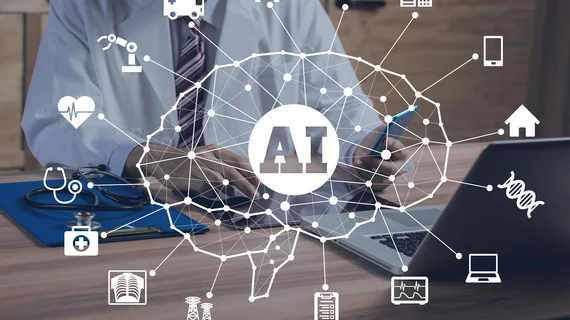Google’s AI system rivals radiologists at detecting breast cancer
An AI algorithm developed by Google outperformed radiologists at identifying breast cancer on mammograms and may bolster the accuracy of screening for the disease.
The task utilized Alphabet Inc’s DeepMind AI unit, which recently merged with Google Health, to beat out six radiologists at identifying cancer on a large dataset of breast scans. What’s more, the approach may put a significant dent in reader’s workloads while maintaining high accuracy levels.
Screening is the first line of defense for early detection in women with no clear signs of the disease. It can be particularly challenging to distinguish breast cancer, however, given that it is often disguised under dense breast tissue. Paired with the fact that more than 40% of women older than 40 have denser tissue, early detection is becoming more important.
Researchers from the Imperial College London, Britain’s National Health Service and Northwestern Medicine in Chicago worked with their peers at Google Health to train their algorithm on more than 28,000 mammograms. The platform identified cancer in women with a biopsy-proven form of the disease or normal follow-up imaging results at least one year later. Both are considered gold standard measurements.
After testing, the authors found the AI system beat the decisions made by the radiologists who originally read the mammograms as well as those executed by six expert radiologists tasked with interpreting 500 randomly selected cases.
After performing an experiment to test the clinical implications of the DeepMind algorithm, the researchers reported a reduction in both false positives and false negatives. With further testing, the group noted, the approach could improve the accuracy of breast cancer screening.
“Here we present an artificial intelligence system that is capable of surpassing human experts in breast cancer prediction,” Scott Mayer McKinney, with Google Health, and colleagues wrote Jan. 1 in Nature.
McKinney et al. also performed a simulation employing the AI to complete the double-reading process utilized in the U.K., and found it could reduce the workload of a second reader by 88%. The time saved is a central goal of many AI-based endeavors.
For all the positives, Etta D. Pisano, MD, of Harvard Medical School, cautioned clinicians to pump the brakes, noting the study had many limitations and was not tested in the clinical setting.
“The real world is more complicated and potentially more diverse than the type of controlled research environment reported in this study,” Pisano wrote Jan. 1 in a Nature commentary.
Future clinical trials should incorporate the various mammography modalities institutions are using, not just tomosynthesis and conventional 2D mammography used in this study. Additionally, McKinney and colleagues did not test the AI on a representative sample of the general population, something that can skew an algorithm’s performance, Pisano wrote.

